115 Years, 115 Impactful Moments
Click to play USC Viterbi's 115th anniversary trivia game
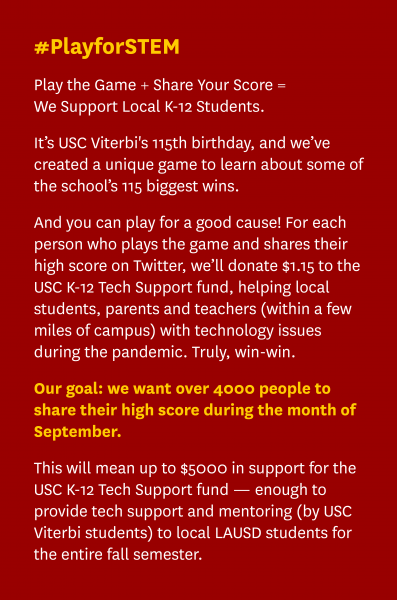 In 1905, USC offered its very first engineering courses out of the physics and mathematics departments.
In 1905, USC offered its very first engineering courses out of the physics and mathematics departments.
One hundred and fifteen years later, the USC Viterbi School of Engineering has a name and a host of accomplishments over the ensuing 11.5 decades.
This past May, Dean Yannis Yortsos, working with USC Viterbi vice deans, chairs, and select senior faculty, sought to identify 115 amazing USC Viterbi accomplishments by faculty, students and alumni over that span of time. This list would span all eight departments, the famed USC Information Sciences Institute and various programs of the school.
This list, like many of its kind, suffers from a clear recency bias. It is by no means the definitive list of all the USC Viterbi School’s noteworthy accomplishments! However, despite these limitations, perhaps it will serve as a helpful primer on what George Bekey, USC Viterbi professor emeritus, once called the school’s “remarkable trajectory.”
Test your knowledge of these USC Viterbi “wins” in a “Who Wants To be A Millionaire”-style interactive game above.
Or, for those who prefer to dive right in…the full list of 115 accomplishments for 115 years awaits.
Advancement

In November 2017, the John D. O’Brien Nanofabrication Lab, a world class "machine shop for nanotechnology" is dedicated to the memory of the school's first executive vice dean, who passed away earlier that year.
Enabled by an anonymous gift, the facility gives students and faculty the ability to develop novel biomedical diagnostic and implantable devices.
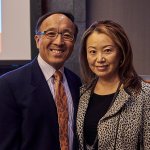
In 2016, the Min Family Challenge (MFC) is established through an endowment by alumnus Bryan Min and his wife, Julie Min, to place USC Viterbi students at the epicenter of the world’s most pressing issues.
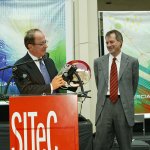
In 2004, with a donation by trustee Mark Stevens, USC Viterbi establishes what is today known as the Stevens Institute for Innovation — the largest naming gift to establish a technology commercialization institute at an engineering school.
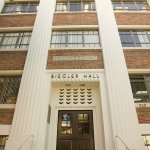
The first engineering building on the USC campus was dedicated in 1940.
The 28,000-square-foot Engineering Building (now Biegler Hall) cost $86,000. Seventeen years later, the university’s first computer was installed there.
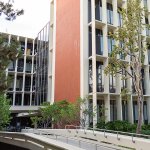
In 1961, the Olin Foundation gifted $2.3 million to USC for construction of Olin Hall, the first major gift in USC's $106-million fundraising campaign.
Under the leadership of dean Alfred C. Ingersoll, this partnership continued with Vivian Hall of Engineering and Materials Science in 1967 — constructed with another $2.7 million grant from the Olin Foundation.
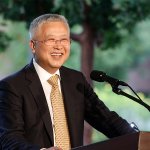
Launched in July 2010, Ming Hsieh's second transformative gift established the Ming Hsieh Institute for Research on Engineering-Medicine for Cancer, fueling a revolutionary collaboration between the USC Viterbi School and the Keck School of Medicine of USC.
The gift created a permanent endowment to support collaborative research in the field of nanomedicine for cancer.

Ronald Tutor Hall, a “home” for engineering undergraduates, opens in 2005. The six-story, state-of-the-art facility houses all student services and student organizations.

With its fountains, statue of Neil Armstrong and outdoor meeting spaces, the Epstein Family Engineering Plaza (formerly Archimedes Plaza), completed in 2014, is a central gathering place for faculty, students and staff.
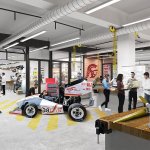
The Baum Family Maker Space is established in summer 2020 for undergraduate student invention.
This new facility positions USC Viterbi as a leader in hands-on engineering learning for students.
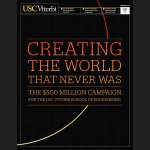
In 2019, USC Viterbi concluded its ambitious $500 million fundraising initiative (officially launched in 2013), resulting in widespread impact to the school, including 58 new endowed scholarships, 19 endowed faculty positions.
This came on the heels of the $300 million “Destination: The Future” initiative (2001-2008) that named the school and half of its departments.

Historic naming gifts - USC Viterbi is the first U.S. engineering school with four named departments:
The Daniel J. Epstein Department of Industrial and Systems Engineering (2002), the first named department at USC; the Mork Family Department of Chemical Engineering and Materials Science (2005); the Ming Hsieh Department of Electrical and Computer Engineering (2006); and the Sonny Astani Department of Civil and Environmental Engineering (2007).
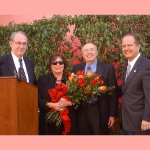
In 2004, the USC School of Engineering is renamed as the USC Andrew and Erna Viterbi School of Engineering.
The gift — the largest ever to an existing school of engineering — is from from Andrew J. Viterbi, ’62, who co-founded wireless technology company Qualcomm, and his wife, Erna.



